Mokete Diaries Part 2
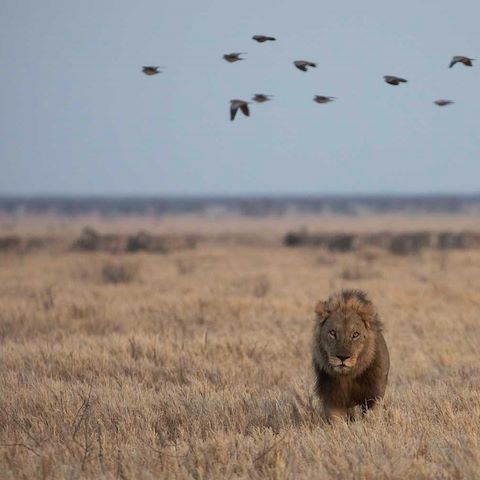
Being in the African wilderness is something I never tire of. It’s a time to reflect on what is truly important in life. Recalibrate if you will.
Time on safari is also always dictated by nature. Sitting around a fire each night, gazing at the remarkable night sky far away from lights, and humanity, is a privilege. I also often just lie awake in my tent, utterly content, listening to the distant yelp of black-backed jackals, the low hoot of a southern white-faced owl or the nearby whoop of a spotted hyena.
Wilderness Mokete
On one evening recently at the new Wilderness Mokete camp, a herd of African elephants fed nearby, ripping branches and breaking trees as they did so. Tracks in the soft sand revealed what visitors passed nearby to the camp during the night, often unbeknown to us. In the early hours of each morning, we huddled together, starting the day in silence over a welcome cup of coffee, as Mababe slowly came to life.
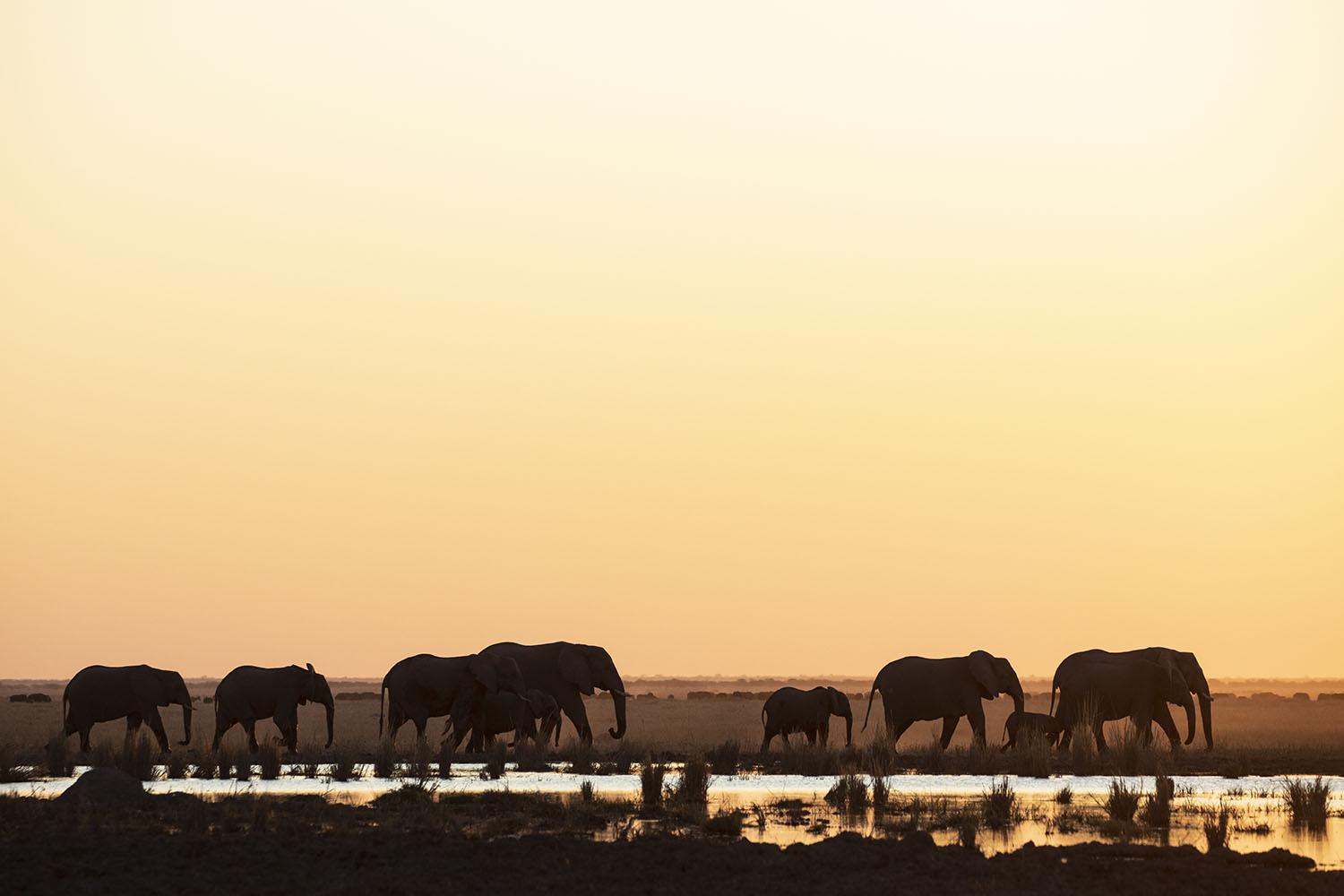
Untouched wilderness in Botswana
The Mokete Private Wilderness Area forms part of the Savuti-Mababe-Linyanti Ecosystem (SMLE) – expansive woodlands and open grasslands situated between two major wetland systems – the Okavango Delta and the Linyanti Swamps. The expansive grassland of Mababe on which Mokete sits was once an ancient super lake – Paleolake Mababe. This northern conservation area of Botswana is larger than 80,000 km2, one of the few remaining relatively unfragmented ecosystems in Africa that supports rare species and important herbivore migrations.
Exploring this wild land
Each day on my recent visit to this area of Botswana, we were out exploring the Mokete area well before dawn, the winter mornings crisp, still and invigorating. We reasoned that we wanted to be out on the uninterrupted Mababe grasslands at first light for the best opportunity to locate predators such as lion.
On two occasions over my visit, we got lucky. Stopping frequently and diligently, scanning with binoculars, we picked up two male lions that were also heard roaring in the early hours of the morning. We spent a good hour simply following these iconic African predators as they traversed the grasslands, roaring and interacting with each other, before silently disappearing again into the woodland fringe. They were prime specimens – regal, adult males with resplendent manes that made me wonder if their ancient lineage could be traced back to the Kalahari’s ‘black-maned’ lions. These males seem to be new to the area, so time will tell if they will be seen more frequently.
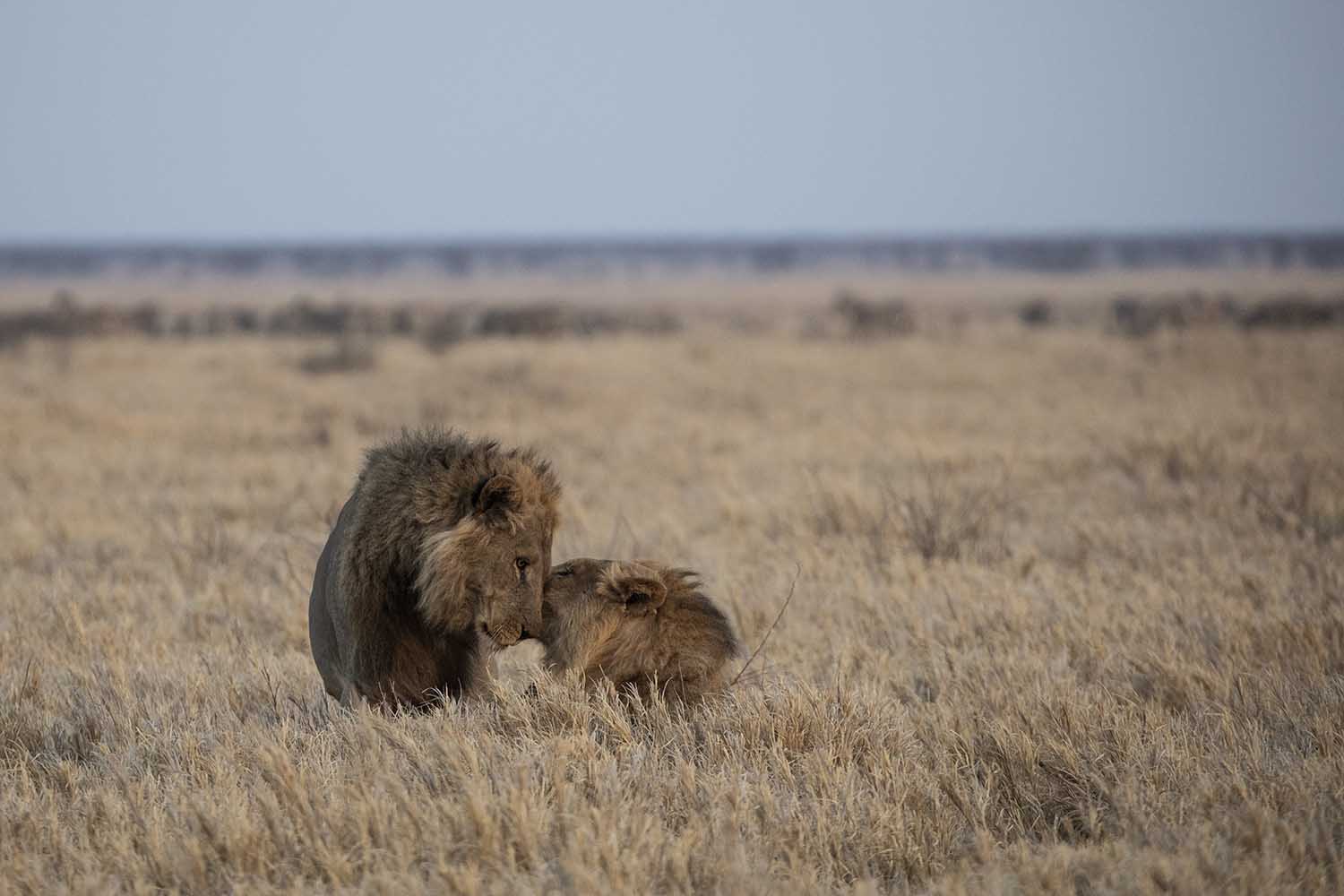
Cats a-plenty
While this was all happening our two-way radio also crackled to life, and a wildlife videographer in the area at the time reported some lionesses with cubs on a fresh buffalo kill. These lionesses are part of the Northern Pride, which currently comprises three lionesses, four cubs and three adult males (two new males having joined this pride in August). On the western side of the Marsh another pride comprises 21 individuals. A pride of eight lions is also being seen around Wilderness Mokete itself, frequently moving right through camp. Sixty different lion individuals were observed and identified last year in August. A better grasp of the lion dynamics here will no doubt be obtained in the coming months and years with the new Wilderness Mokete camp. The lions here frequently hunt in these open grasslands, at any time of the day, and often take down formidable African buffalo, which occur in some of the highest densities in Africa.
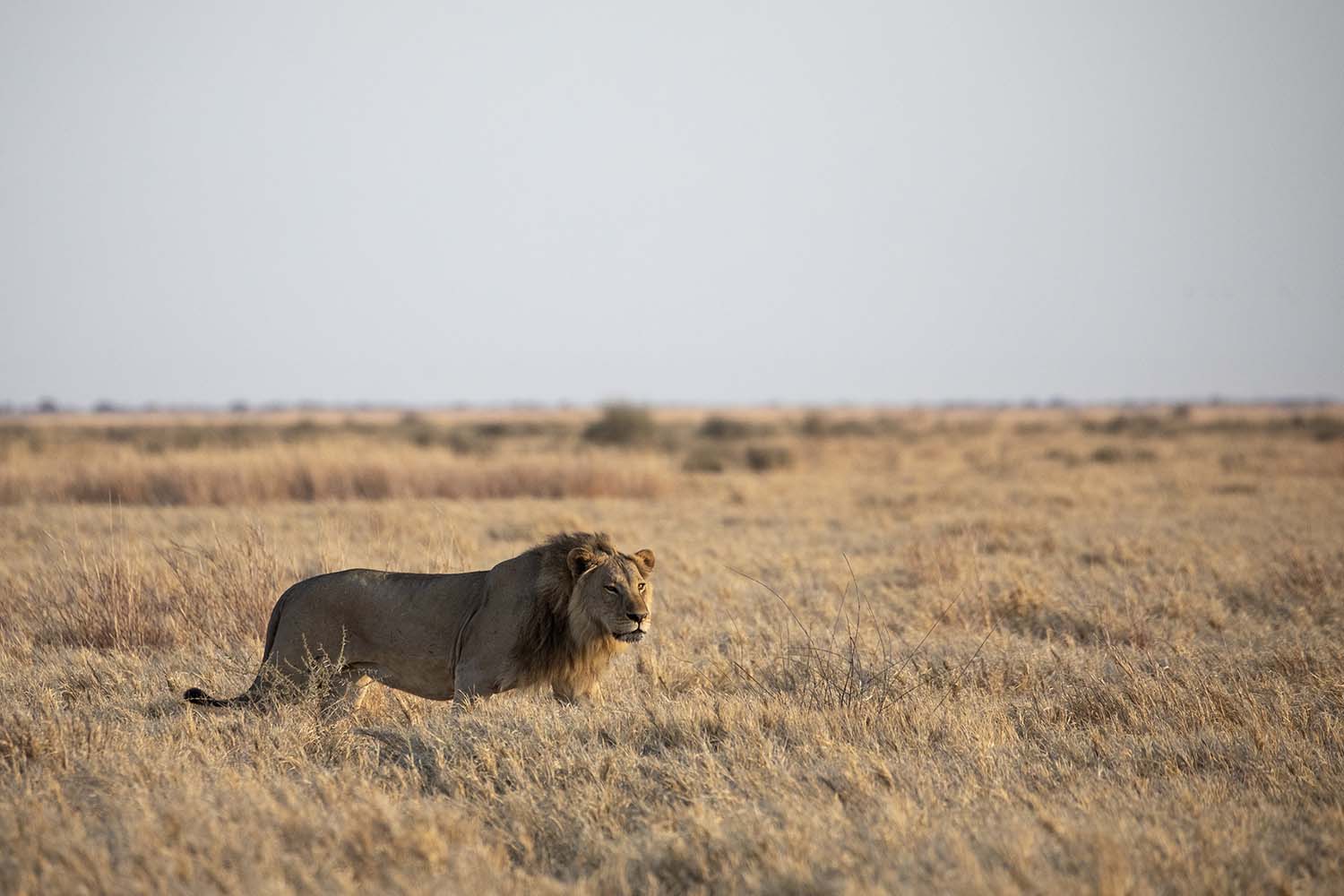
As far as other predators go, two dominant male cheetahs are often seen in Mokete’s northern grasslands, around a prominent landmark simply known as Lone Knob Island – a solitary knob thorn (Senegalia nigrescens) standing sentinel over these picturesque grasslands. We had the privilege to camp right under this tree one evening, much to the disdain of a flock of helmeted guineafowl that must use it as their evening roost site. It was just us, the guineafowls (who eventually quietened down) and the immensity of it all that evening.
The spectacular sightings continue
As the days heat up, more and more animals emerge onto the grasslands, coming from all directions. This is common in the late dry season (September through November) when it is extremely hot and the wildlife is thirstier. We encountered buffalo mega-herds (numbering in their thousands) on two occasions moving between the neighbouring Chobe National Park to the north and the Mababe grasslands. An estimated three buffalo mega-herds traverse the Mokete area, with herd size varying between 1,000 and 3,000, depending on lion pressure at any given time.
Tsessebe, wildebeest and zebra were seen in their hundreds, especially in the north-eastern parts of the concession, pretty close to where Wilderness Mokete camp is. Comical warthogs were common and another definite highlight for me was seeing good numbers of sable and roan antelope (possibly the highest populations in Botswana) that also emerged from the woodland fringe in search of water.
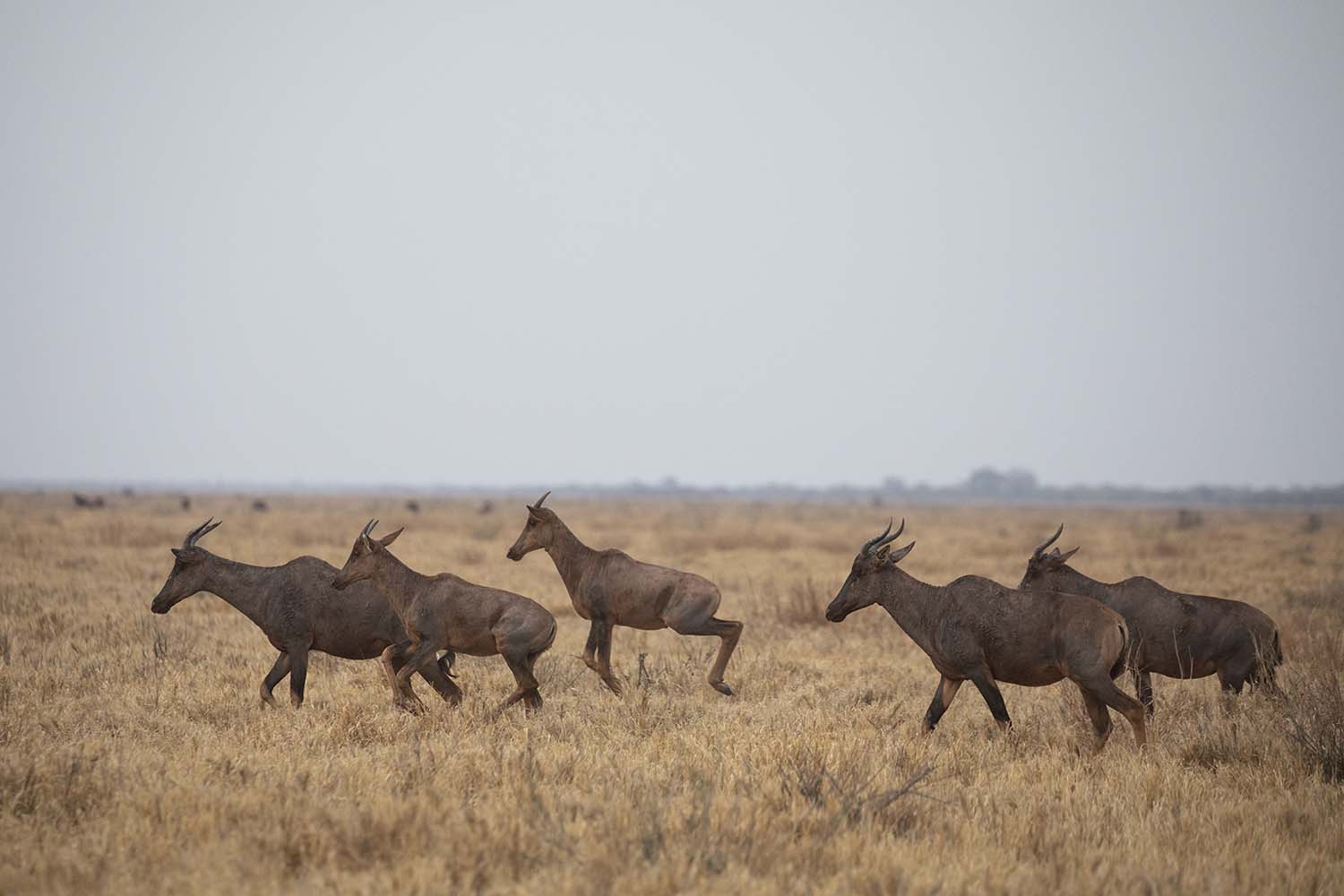
Large aggregations of giraffe seemed almost out of place in this open Mokete landscape, and their distinct profiles shimmered in the midday heat haze as they moved between water and woodland areas. In the more permanent wetland of the Mababe Marsh, several large pods of hippo were found and the grassy floodplains in the south were ideal habitat for red lechwe, reedbuck and waterbuck.
Whilst zebra occur here year-round their numbers are bolstered as massive herds pass through at the turn of the season in December, and again in March. What seemed like almost limitless family groups of African elephants seemed to come and slake their thirst, and feed, in and along the edge of the Mababe Marsh. What could be better than simply finding a suitable tree on the woodland fringe and watching herd after herd of elephants come to the water? Just sitting, in silence, watching these large pachyderms quietly amble past you, softly communicating acoustically with each other in low-frequency rumbles.
The wildlife at night
On other days we were less successful in finding lions, but the high vulture numbers in the area eventually betrayed their most recent kill, sometimes frustratingly close to where we were searching for them. Their presence simply hidden by the sanctum of Mababe’s grasslands. We made an active effort to explore different areas of Mokete and even undertook the odd night drive, one particularly productive for serval, African wild cat, marsh owl and several spotted hyena. An aardwolf was also seen.
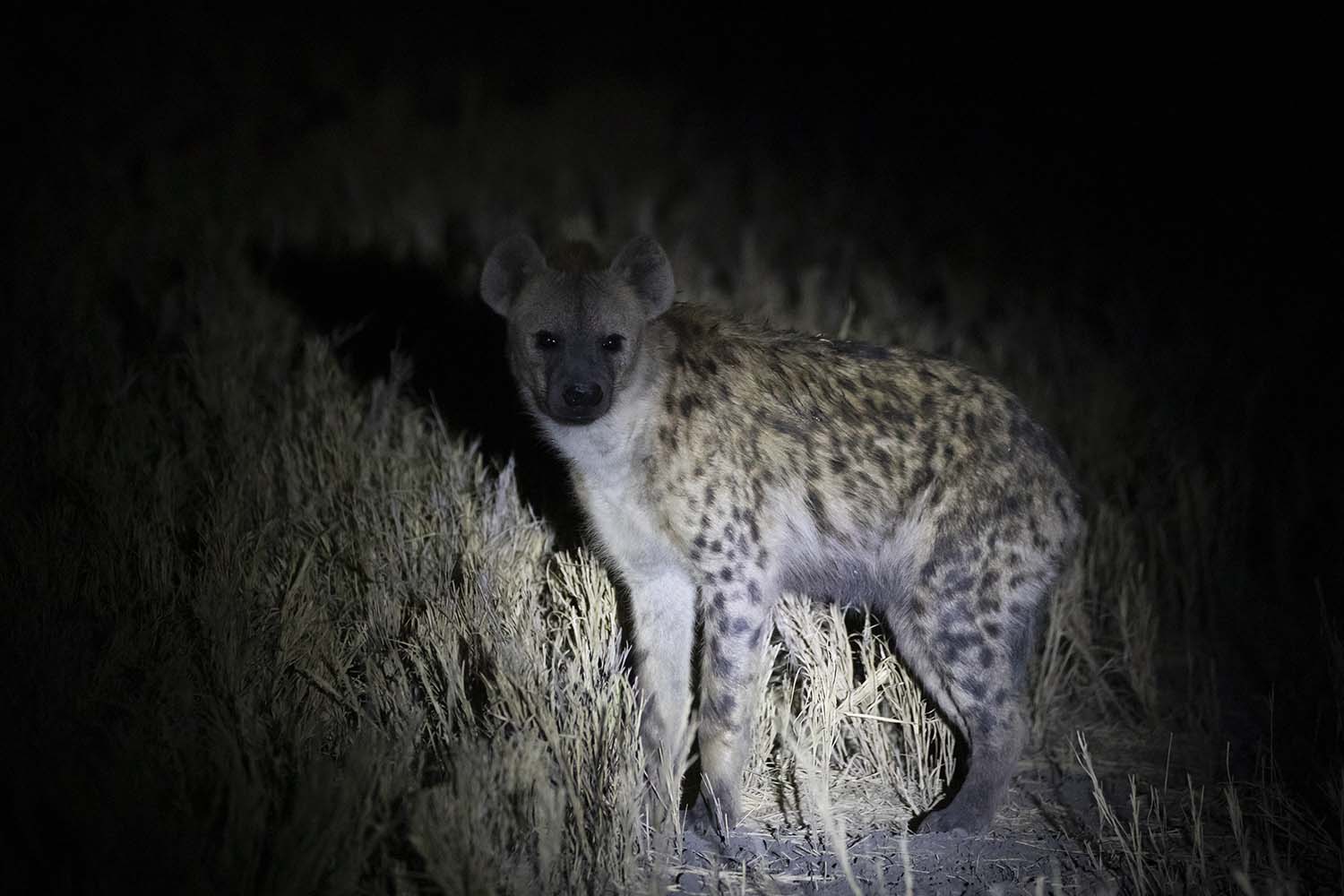
Sunrises and sunsets were dramatic over this unspoilt expanse, and my time at Wilderness Mokete was over way too soon. My six days here barely scratched the surface as to what Mokete has to offer. This is an iconic wilderness destination with which one can form a deep bond.
Mababe has a rare commodity so sought after these days – space. The conventional safari idea does not work at Mokete either. Go out on all-day game drives so you don’t miss anything, have lunch under a tree in the middle of nowhere. Forget about time and soak up the space.

About the author
Martin Benadie
Born and raised in Zimbabwe, Martin's keen interest in birds began at a young age sparking a lifelong fascination in all things feathered. Martin also ably hosts photographic safaris throughout the Southern African region. Out learning and observing as much about the natural world is when Martin is at his happiest. Martin is the Wilderness Group Biodiversity Co-ordinator

Let’s plan your next journey
Ready?
When we say we’re there every step of the way, we mean it, literally. From planning the perfect circuit, to private inter-camp transfers on Wilderness Air, and easing you through Customs. We’re with you on the ground, at your side, 24-7, from start to finish. Ready to take the road less travelled? Contact our Travel Designers to plan an unforgettable journey.